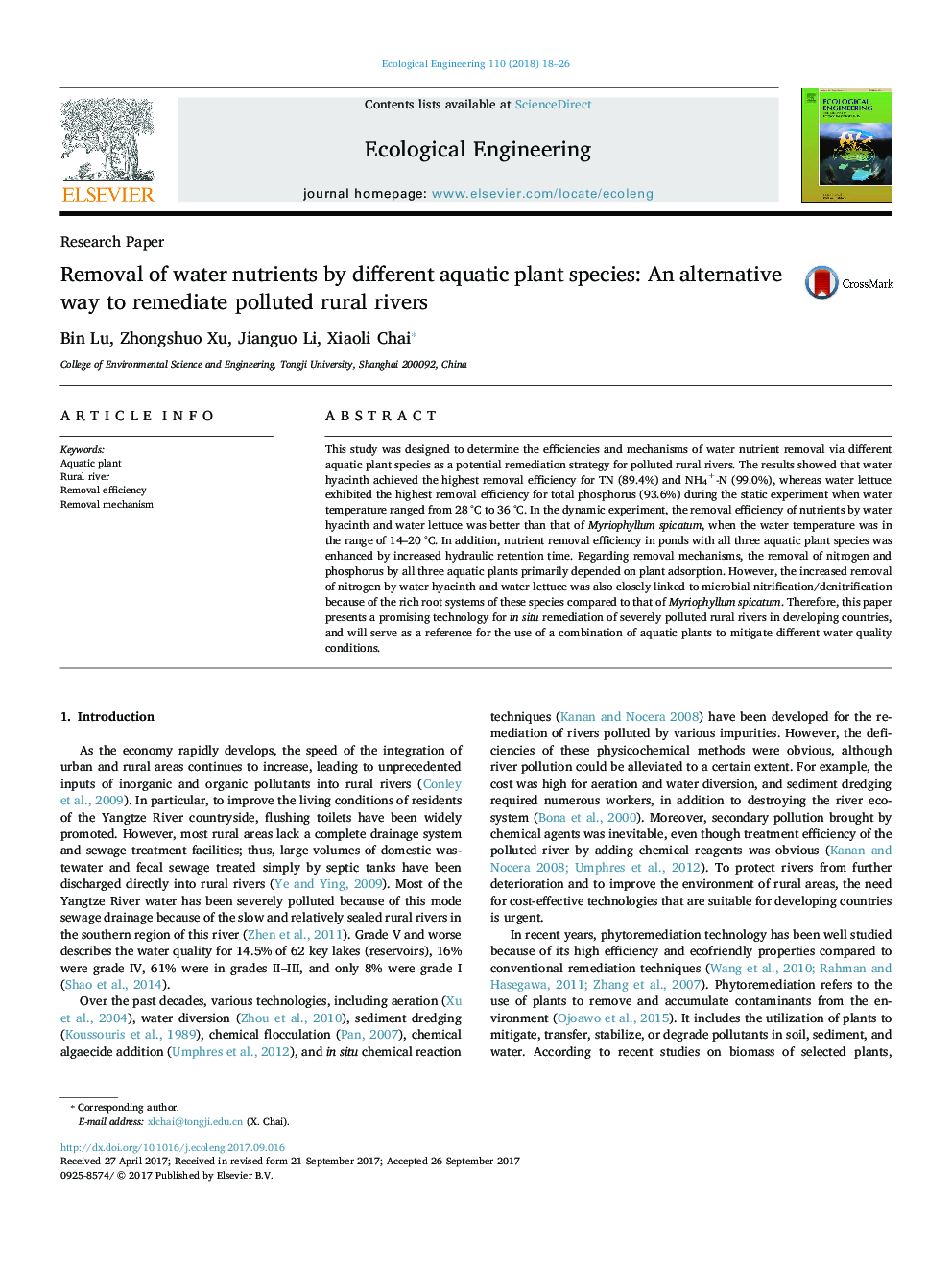| کد مقاله | کد نشریه | سال انتشار | مقاله انگلیسی | نسخه تمام متن |
|---|---|---|---|---|
| 5743500 | 1617992 | 2018 | 9 صفحه PDF | دانلود رایگان |
عنوان انگلیسی مقاله ISI
Removal of water nutrients by different aquatic plant species: An alternative way to remediate polluted rural rivers
ترجمه فارسی عنوان
حذف مواد مغذی آب توسط انواع مختلف گیاهان آبزی: یک روش جایگزین برای دفع رودخانه های آلوده به روستاها
دانلود مقاله + سفارش ترجمه
دانلود مقاله ISI انگلیسی
رایگان برای ایرانیان
کلمات کلیدی
گیاه آبزی، رودخانه روستایی، راندمان حذف، مکانیزم حذف،
موضوعات مرتبط
علوم زیستی و بیوفناوری
علوم کشاورزی و بیولوژیک
بوم شناسی، تکامل، رفتار و سامانه شناسی
چکیده انگلیسی
This study was designed to determine the efficiencies and mechanisms of water nutrient removal via different aquatic plant species as a potential remediation strategy for polluted rural rivers. The results showed that water hyacinth achieved the highest removal efficiency for TN (89.4%) and NH4+-N (99.0%), whereas water lettuce exhibited the highest removal efficiency for total phosphorus (93.6%) during the static experiment when water temperature ranged from 28 °C to 36 °C. In the dynamic experiment, the removal efficiency of nutrients by water hyacinth and water lettuce was better than that of Myriophyllum spicatum, when the water temperature was in the range of 14-20 °C. In addition, nutrient removal efficiency in ponds with all three aquatic plant species was enhanced by increased hydraulic retention time. Regarding removal mechanisms, the removal of nitrogen and phosphorus by all three aquatic plants primarily depended on plant adsorption. However, the increased removal of nitrogen by water hyacinth and water lettuce was also closely linked to microbial nitrification/denitrification because of the rich root systems of these species compared to that of Myriophyllum spicatum. Therefore, this paper presents a promising technology for in situ remediation of severely polluted rural rivers in developing countries, and will serve as a reference for the use of a combination of aquatic plants to mitigate different water quality conditions.
ناشر
Database: Elsevier - ScienceDirect (ساینس دایرکت)
Journal: Ecological Engineering - Volume 110, January 2018, Pages 18-26
Journal: Ecological Engineering - Volume 110, January 2018, Pages 18-26
نویسندگان
Bin Lu, Zhongshuo Xu, Jianguo Li, Xiaoli Chai,
